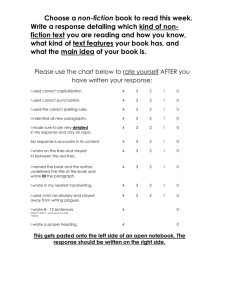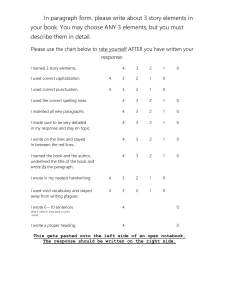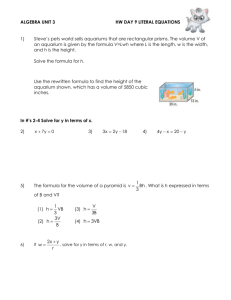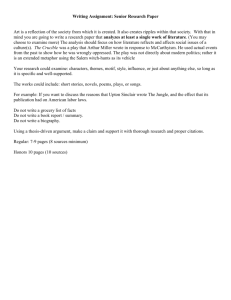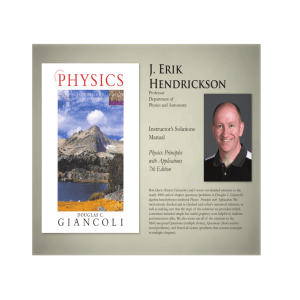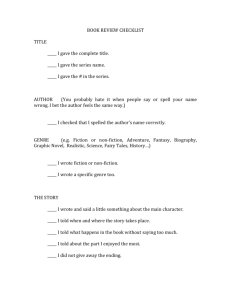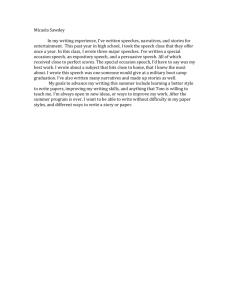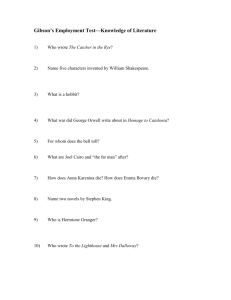Artist
advertisement
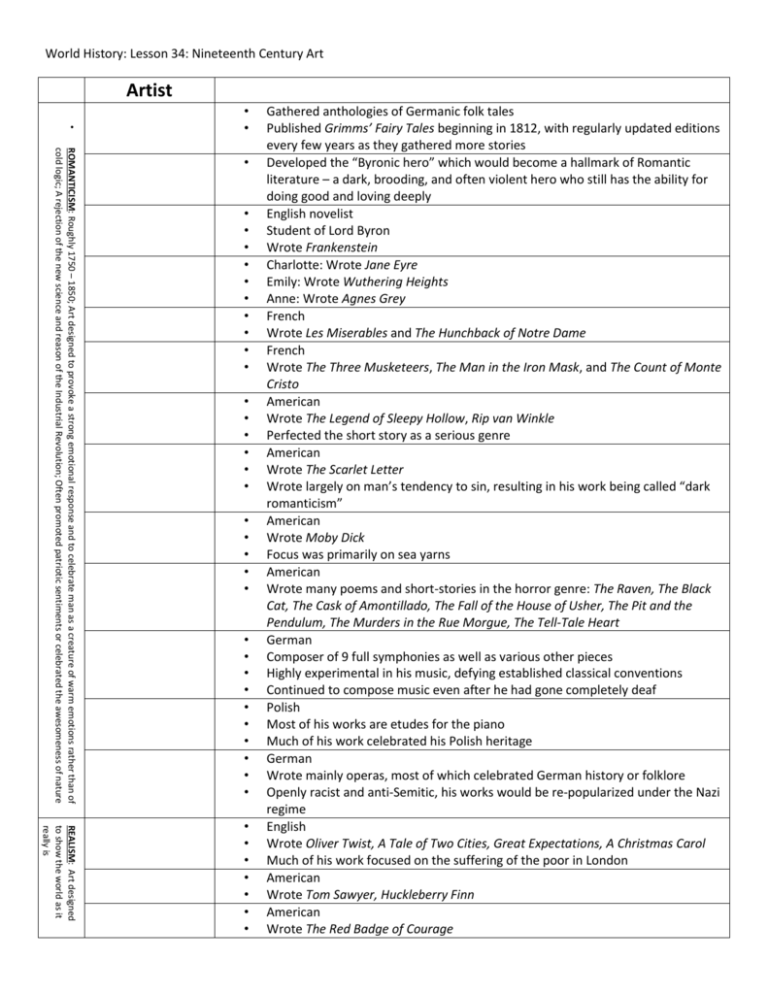
World History: Lesson 34: Nineteenth Century Art Artist • • • ROMANTICISM: Roughly 1750 – 1850; Art designed to provoke a strong emotional response and to celebrate man as a creature of warm emotions rather than of cold logic; A rejection of the new science and reason of the Industrial Revolution; Often promoted patriotic sentiments or celebrated the awesomeness of nature • • • • • • • • • • • • • • • • • • • • • • • • • • • • • • • • REALISM: Art designed to show the world as it really is • Artists often sought to improve the • • • • • • • Gathered anthologies of Germanic folk tales Published Grimms’ Fairy Tales beginning in 1812, with regularly updated editions every few years as they gathered more stories Developed the “Byronic hero” which would become a hallmark of Romantic literature – a dark, brooding, and often violent hero who still has the ability for doing good and loving deeply English novelist Student of Lord Byron Wrote Frankenstein Charlotte: Wrote Jane Eyre Emily: Wrote Wuthering Heights Anne: Wrote Agnes Grey French Wrote Les Miserables and The Hunchback of Notre Dame French Wrote The Three Musketeers, The Man in the Iron Mask, and The Count of Monte Cristo American Wrote The Legend of Sleepy Hollow, Rip van Winkle Perfected the short story as a serious genre American Wrote The Scarlet Letter Wrote largely on man’s tendency to sin, resulting in his work being called “dark romanticism” American Wrote Moby Dick Focus was primarily on sea yarns American Wrote many poems and short-stories in the horror genre: The Raven, The Black Cat, The Cask of Amontillado, The Fall of the House of Usher, The Pit and the Pendulum, The Murders in the Rue Morgue, The Tell-Tale Heart German Composer of 9 full symphonies as well as various other pieces Highly experimental in his music, defying established classical conventions Continued to compose music even after he had gone completely deaf Polish Most of his works are etudes for the piano Much of his work celebrated his Polish heritage German Wrote mainly operas, most of which celebrated German history or folklore Openly racist and anti-Semitic, his works would be re-popularized under the Nazi regime English Wrote Oliver Twist, A Tale of Two Cities, Great Expectations, A Christmas Carol Much of his work focused on the suffering of the poor in London American Wrote Tom Sawyer, Huckleberry Finn American Wrote The Red Badge of Courage IMPRESSIONISM: Art designed to show only the impression of things, not the full details of realism POST-IMPRESSIONISM: Art has a variety of styles, usually using sharp lines, bright colors • • • • • • • • • • • • • • • • • • • • • • • • • • French Considered the master of the Impressionist movement Masterworks: paintings of Rouen Cathedral and Waterlilies French Many of his paintings were of ballet dancers French Many of his paintings were of the working poor French Painter and sculptor Many of his paintings were of Parisian high society Dutch Considered the master of the Post-Impressionist era Produced over 2000 pieces Cut off his own ear due to depression, later committed suicide by shooting himself in the chest Masterworks: Starry Night French noble Suffered from a growth disease (Toulouse-Lautrec Syndrome) Many of his works focused on nightclubs like the Moulin Rouge French Masterworks: A Sunday on La Grande Jatte French Much of his later work was completed on the Pacific island of Tahiti Norwegian Developed a new form of Post-Impressionism called Expressionism His work was denounced by the Nazis as “degenerate” and banned in the 1930s Masterworks: The Scream
